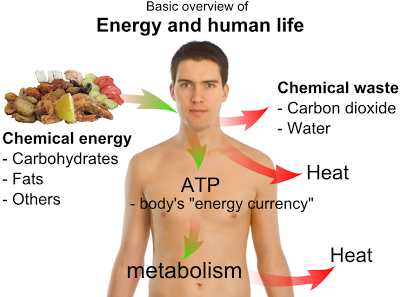Biology

- Krebs Cycle Broken Down
The Krebs cycle, also known as the Citric Acid cycle, is a very important process in cellular respiration. Without this portion, respiration would not be possible. This is because the Krebs cycle uses the pyruvate molecules from glycolysis to produce...
- Life
What makes up Life? Life is supported by a few major characteristics that apply to all living organisms ranging from single celled organisms to multicultural organisms: Adaptations: Where an organism adapts to its environment in order...
- #97 Summary Of Energy And Respiration
1 Organisms must do work to stay alive. The energy input necessary for this work is either light, for photosynthesis, or the chemical potential energy of organic molecules. Work includes anabolic reactions, active transport and movement. Some organisms,...
- #85 Energy And Respiration - Syllabus 2016
12.1 Energy12.2 Respiration Energy is a fundamental concept in biology. All living things require a source of cellular energy to drive their various activities. ATP is the universal energy currency as its molecules are small,...
- Metabolism
METABOLISM All the biochemical reactions taking place inside a living system together constitute metabolism. E.g.GlycolysisKreb's cycleRespirationPhotosynthesis Removal of CO2 from amino acids to form amine.Removal of amino group in a nucleotide...
Biology
Catabolic and Anabolic
What exactly are Catabolic and Anabolic reactions?
Catabolic and anabolic reactions are both metabolic processes that go to support an organisms metabolism.
Catabolic reactions make energy for the cell to use by breaking down large molecules and turning them into energy called ATP, or Adenosine Triphosphate. An example of a Catabolic reaction would be digestion. When an organism digests its food, it breaks it down and collects the energy from it and then sends the energy on to be used in the organism itself.
Once ATP is produced, Anabolic reactions use it to make molecules that the cell needs to keep working and stores the left over molecules for later. An example of an Anabolic reaction would be when an organisms body creates fat out of extra nutrients it it digests.

A Catabolic reaction and an Anabolic reaction do the opposite of what the other does, but one could not survive without the other. Catabolic reactions break down large molecules into small ones while Anabolic reactions build small molecules into large ones. So in a way, one makes an organism grow and the other makes it shrink. If they work at the same speed then an organism can stay healthy and fit and not be malnourished. If the two reactions do not work at the same speed an organism can become over weight or underweight and either lead into even more issues with the organisms health.
Why do organisms need both? So that the organism can transfer energy from one area and place it into another where the organism can either use or store it.
- Krebs Cycle Broken Down
The Krebs cycle, also known as the Citric Acid cycle, is a very important process in cellular respiration. Without this portion, respiration would not be possible. This is because the Krebs cycle uses the pyruvate molecules from glycolysis to produce...
- Life
What makes up Life? Life is supported by a few major characteristics that apply to all living organisms ranging from single celled organisms to multicultural organisms: Adaptations: Where an organism adapts to its environment in order...
- #97 Summary Of Energy And Respiration
1 Organisms must do work to stay alive. The energy input necessary for this work is either light, for photosynthesis, or the chemical potential energy of organic molecules. Work includes anabolic reactions, active transport and movement. Some organisms,...
- #85 Energy And Respiration - Syllabus 2016
12.1 Energy12.2 Respiration Energy is a fundamental concept in biology. All living things require a source of cellular energy to drive their various activities. ATP is the universal energy currency as its molecules are small,...
- Metabolism
METABOLISM All the biochemical reactions taking place inside a living system together constitute metabolism. E.g.GlycolysisKreb's cycleRespirationPhotosynthesis Removal of CO2 from amino acids to form amine.Removal of amino group in a nucleotide...
